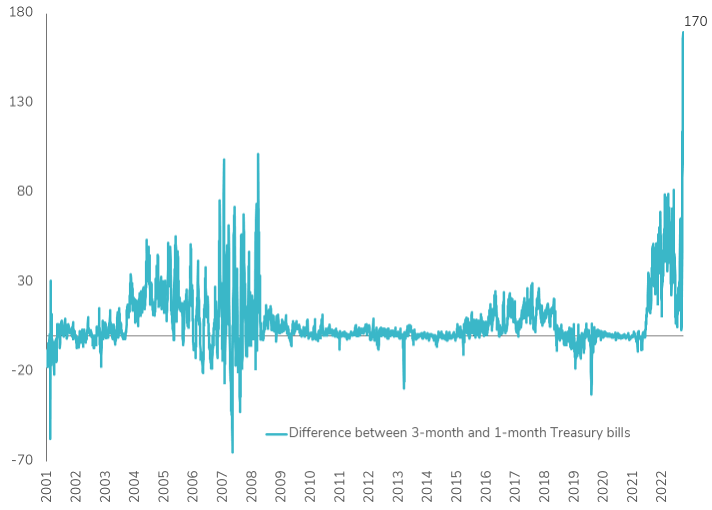What happened last week?
Central banks: The ECB minutes revealed that inflation remains their main concern despite the banking crisis. But it also showed great uncertainty about the extent and speed of monetary policy transmission. This divergence was evident in the speeches of different ECB members, from Stournaras of the Bank of Greece, who said that rates had almost peaked, to Wunsch of the National Bank of Belgium, who agreed to stop interest rate hikes only when wage growth begins to decline. In the U.S., as we enter a black period (no more interventions by FED members) until the next FOMC meeting (May 3), it appears that the 25 bps rate hike is a done deal, while a pause could be in question if data continues to show strength. Meanwhile, in Argentina, the central bank raised its key rates by 300 bps to 81%.
Rates: The traditional debt ceiling issue seems to be of greater concern this time around than in previous episodes, as the 1-year U.S. CDS exceeded 100 bps for the first time, while the difference between 1-month and 3-month Treasury yields reached nearly 2% (!). U.S. Treasuries posted a negative performance, -0.3% on the week, as yields rose about 8 bps across the yield curve, largely due to resilient economic data. The 10-year U.S. Treasury yield closed the week at 3.58%, its highest level in a month. In Europe, government bonds fell by -0.4% over the week in the wake of UK bonds, which plunged by more than -1.1% following the publication of UK inflation again above 10%.
Credit: U.S. credit indices were slightly negative on the week, -0.2% and -0.3% for investment grade (IG) and high yield (HY), respectively, mainly due to rising interest rates. In the first quarter, a total of $11.4 billion of U.S. corporate bonds were downgraded to high yield (60% of the 2022 total!), the highest level since the pandemic. Note that S&P's downgrade of Nissan to BB+ in March accounts for 80% of this amount. In Europe, IG and HY ended the week flat as tightening credit spreads offset the rise in European swap rates. Additional Tier 1 (AT1) bonds, +0.4% on the week, continued to recover their losses thanks to the reopening of the primary market by a Japanese bank, Sumitomo Mitsui Financial Group. The 140 billion yen ($1 billion) sale of AT1 bond is one of the largest transactions in the yen corporate bond market this year, indicating that at least in Japan there is strong demand from local lenders.
Emerging market: Asian credit bonds underperformed last week due to the poor performance of Chinese property developers. Chinese real estate bonds have turned negative since the beginning of the year, erasing the big rally they had earlier in the year. Investor sentiment has been dampened since the collapse of offshore 2023 new issues, doubts about the ability of SOEs to meet their obligations, and restructuring plans that appear to be a very long way to return on investment. EM corporate bonds in hard currency lost 0.4% on the week, while EM sovereign bonds posted a 1.2% decline. Finally, EM bonds in local currency fell 0.8% on the week.



.png)
